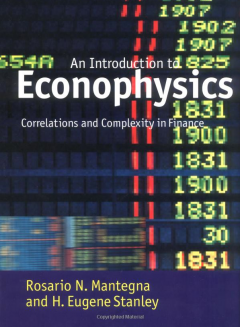
Econophysics is the application of ideas from statistical mechanics to the financial markets. Markets are complex self-adapting systems that are observed to undergo sudden transitions such as “booms” or “bubbles” and “busts” or “crashes”. Transitions in system dynamics are associated with the nucleation and growth of fluctuations, together with a threshold in the state space of the system. Markets are also observed to obey scaling dynamics, an interesting example being the existence of the Pareto distribution of wealth among populations. We will discuss the dynamics of markets from a physics and systems perspective. We will discuss the statistical distributions of returns, the phase dynamics of prices, and models for the markets. We will discuss specific markets such as the equity stock markets (NYSE/Euronext, NASDAQ), the fixed income (bond) markets (Government and Municipals), and the commodities markets (CME and Futures). We will discuss time-dependent models for equity valuations such as the Black-Scholes equation that are used in options pricing.
